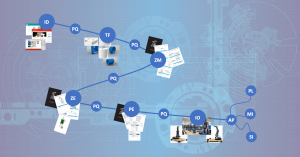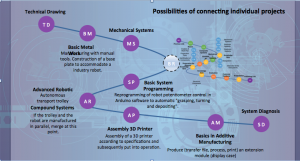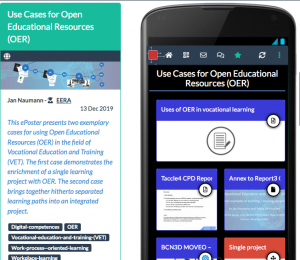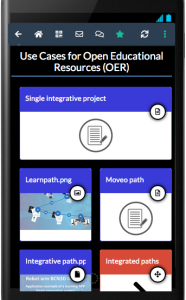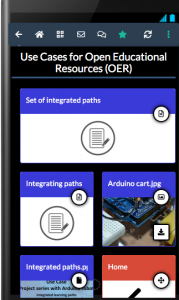Ideas for the forthcoming Multiplier Event of the TACCLE4 CPD project – bringing Learning Toolbox and OER into practice
In my previous post I told that I will be travelling quite a while and get back to office at the end of May. But I also mentioned that we (me together with my colleagues Ludger Deitmer and Jan Naumann) are planning a Multiplier Event on using digital tools to enrich vocational learning culture. And we will be working together to develop our ideas further. Here I have put on paper our first ideas:
1. What kind of event are we planning?
We are planning a Bremen-based and German-speaking Multiplier Event of the TACCLE4 CPD project to be hosted by ITB on Friday 12th June 2020.
2. What is the title of the event? What is our key message?
“Digitale Wege in der beruflichen Bildung – Alibi-Ansätze oder Innovationen”
With this provocative title we want to stimulate critical discussion on halfway-thought reforms around digitization in the field of VET. As a contrast we want to give insights into practitioner-led innovations in vocational learning.
3. What kind of an event do we want to have and with whom?
We want to have an event for and with VET practitioners. We want to invite them to think of their own possibilities to shape new learning arrangements with digital toolsets (e.g. with Learning Toolbox) and open educational resources (e.g. with such learning designs that Jan has presented in the OER-report for TACCLE4 CPD).
As participants we want to invite teachers (from vocational schools) and trainers (from training centres) of whom we know that they
- have an interest in enhancing their digital competences and
- want to develop vocational learning with digital toolsets and OER.
In this respect we want to give them inspiring impulses and opportunities for hands-on training in terms of peer-to-peer support.
4. What contents for discussion and training have we considered?
From the perspective of TACCLE4 CPD project we discussed two main perspectives:
- Use of Learning Toolbox as means to enhance vocational and workplace-based learning culture – in particular from the point of self-organised learning.
- Use of Open Educational Resources (OER) as support for shaping-oriented learning and for combining different learning paths.
From the perspective of TACCLE AI and VET project we discussed some further perspectives that could be taken up:
- The shaping of “Smart factory” competence centres in vocational schools and their contribution to the development of vocational learning culture.
- The use of humanoid robots as “assistants” to teachers in large classes with heterogeneous learners and diverse support needs.
5. What further ideas we want to emphasise in the event?
Promoting the readiness of participants to work with new tools:
- Tools with which they can co-shape their own teaching/learning arrangements;
- Tools that they can develop themselves and use in their teaching and learning.
Create an understanding for the unity of culture, structures and technology in order to achieve sustainable innovations in VET:
- Culture – to bring into picture and spread the innovative spirit to develop learning and to engage colleagues and learners;
- Structures – to ensure the acceptance of the new ideas and the readiness of the whole organisation to support new initiatives;
- Technology – to use appropriate technology for working and learning tasks.
(Points from the perspective of unsuccessful practice:
- You may have inspired teachers but if the structures do not provide any flexibility, the innovations remain isolated.
- You may have up-to-date technologies, but if they are not linked to the learning culture, their potentials are not in full use.
- You may have supportive structures and adequate technologies, but if teachers are not able/willing to take initiatives, the innovations do not take off.)
Provide insights into new learning concepts (enriched with digital tools and digital media) and how to work with them:
- Micro-learning (adjusted to vocational and workplace learning with major time constraints)
- Nuggets with max. 5 minutes digital media content to capture the concentration of learners and to stimulate further learning.
– – –
I guess this is enough for the moment. I will get back to this topic in due time.
More blogs to come …
